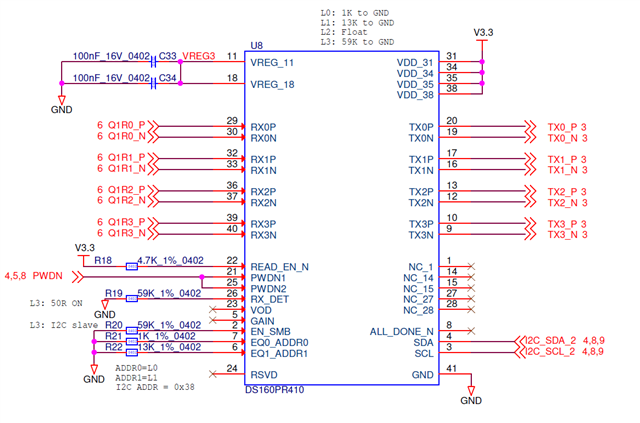I need to disable the RX detection state machine via an I2C bus from an external controller and always enable 50-ohm termination. I tried to set bit 6 in register 0x0D - Manual override of rx_detect_p/n decision to always return valid. But the register 0x01 showed that the rx is not detected. I tried to reset the rx detection state machine by setting and resetting bit 3 in register 0x0D, but it did not help. I tried to set bit 5 in register 0x06 and it helped. The register 0x01 showed that both pins detected the receiver termination. My question is if I enable overrides for driver and equalizer enables by setting bit 5 in register 0x06, how to set up other bits to enable normal operation? I only need to disable the rx detection. The CTLE index may change during operation from 0 to 15. Do I need to enable CTLE Termination bit 6 in register 0x04, Enable CTLE bit 3 in register 0x04, Enable Pre-driver bit 4 in register 0x06, Enable Driver bit 3 in register 0x06 and Enable CM Loop bit 2 in register 0x06? What is the CM loop?
-
Ask a related question
What is a related question?A related question is a question created from another question. When the related question is created, it will be automatically linked to the original question.



